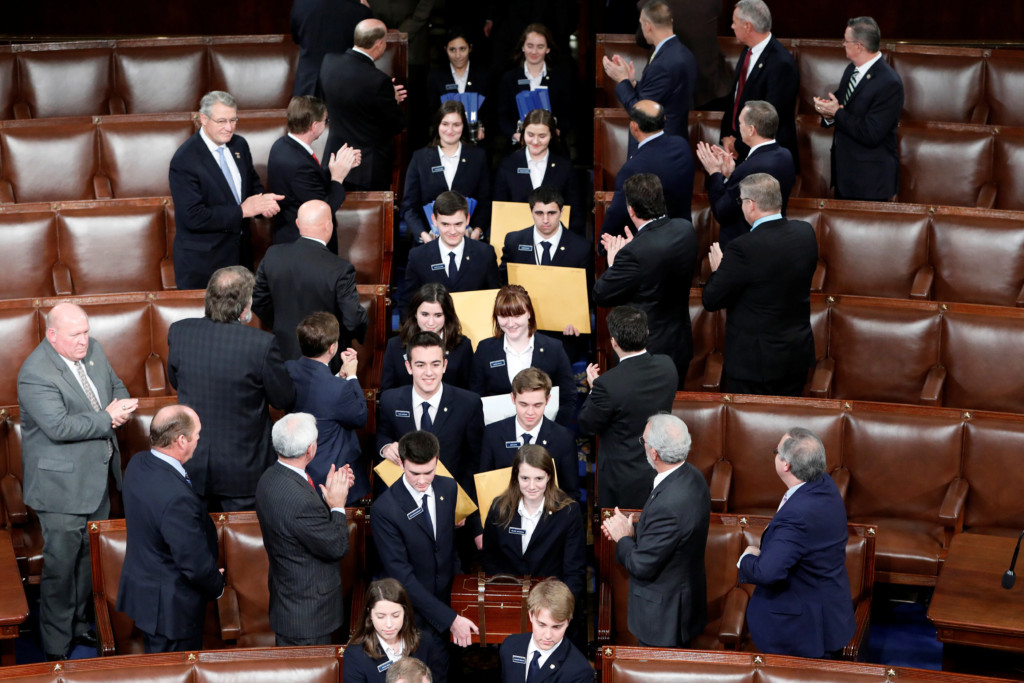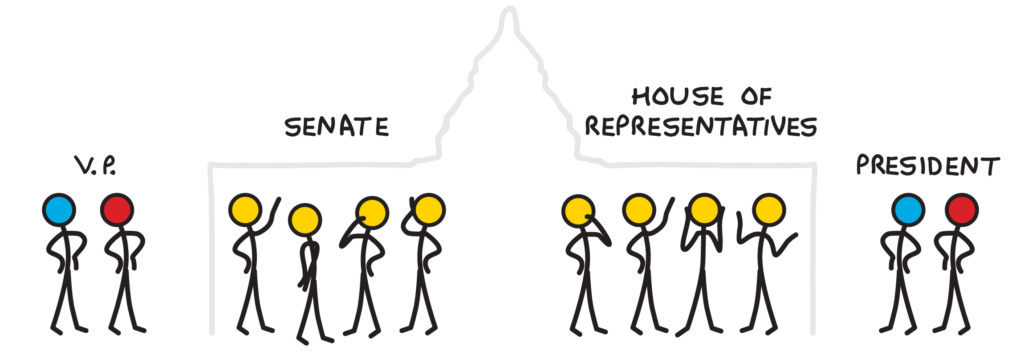The Electoral College plays a central role in how the United States chooses its president. While most voters believe their ballot directly elects the next leader, the process is more complex. The Electoral College is the body that officially casts the deciding votes in presidential elections.
This article explains how the Electoral College works, how it influences campaigns, and the debate surrounding its place in modern American democracy.
What Is the Electoral College?
The Electoral College is a system created by the U.S. Constitution. It consists of 538 electors who formally vote for the president and vice president. Each state receives a number of electors equal to its total representation in Congress: two senators plus a number of representatives based on the state’s population.
For example, California has 55 electoral votes, while smaller states like Wyoming have just 3. To win the presidency, a candidate must secure at least 270 electoral votes.

How the Electoral College Works
On Election Day, voters go to the polls and choose their preferred presidential candidate. However, they are technically voting for a slate of electors who are pledged to that candidate.
Most states use a winner-takes-all system. The candidate who receives the most votes in a state wins all of its electoral votes. Maine and Nebraska are the exceptions; they split their electoral votes based on congressional district outcomes and the statewide winner.
In December, the chosen electors meet in their state capitals to cast their votes. Congress counts these votes in January, and the candidate with the majority—270 or more—is officially declared president.
Why the Electoral College Was Created
The Founding Fathers created the Electoral College as a compromise between electing the president by popular vote and allowing Congress to decide. At the time, there were concerns about giving too much power to a potentially uninformed electorate, as well as the desire to balance the influence of populous and less-populous states.
The system was intended to ensure that all parts of the country had a voice in choosing the president, not just areas with the most people.
How the Electoral College Affects Campaigns
Focus on Swing States
One major effect of the Electoral College is that it changes how candidates run their campaigns. Instead of targeting all voters equally, candidates concentrate on so-called swing states—states where the outcome is uncertain.
Examples of swing states include Florida, Pennsylvania, Michigan, Wisconsin, Arizona, and Georgia. Winning these states can tip the balance of the election, so they receive more visits, more advertising, and more attention from candidates.
Safe States Get Less Attention
States that consistently vote for one party—such as California for Democrats or Alabama for Republicans—are often ignored during campaigns. Since their outcomes are almost certain, candidates do not invest much time or money there.
This leaves many voters in safe states feeling overlooked, even though they still participate in the national election.
Impact on Voter Turnout
Because of this dynamic, voters in swing states tend to have a higher sense of urgency and participation. In contrast, voters in safe states may feel their vote carries less weight, leading to lower turnout.
Examples of Electoral College Outcomes
The 2000 Election
In 2000, Al Gore won the popular vote by about 500,000 votes, but George W. Bush won the Electoral College after a highly controversial recount in Florida. The Supreme Court’s decision to stop the recount gave Bush a narrow electoral victory, despite losing the nationwide vote.
The 2016 Election
In 2016, Hillary Clinton received nearly 3 million more votes nationwide than Donald Trump. However, Trump won the presidency with 304 electoral votes by narrowly winning several key swing states, including Michigan, Pennsylvania, and Wisconsin.
The 2020 Election
In 2020, Joe Biden won both the popular vote and the Electoral College. His victories in swing states like Georgia and Arizona proved decisive. The results again highlighted the importance of a few competitive states in determining the outcome.
Pros of the Electoral College
Protects Smaller States
The Electoral College gives smaller states a stronger voice in national elections. Without it, candidates might only campaign in the most populous areas, ignoring rural and less-populated regions.
Encourages Nationwide Campaigning
To win enough states and reach 270 electoral votes, candidates must appeal to a broad mix of voters across the country. This encourages more balanced platforms and national unity.
Reduces Risk of Nationwide Recounts
Because elections are decided at the state level, close races can be resolved without triggering a national recount. This can help avoid prolonged disputes and delays.
Cons of the Electoral College
Doesn’t Always Reflect the Popular Vote
One of the main criticisms of the Electoral College is that it can allow a candidate to win the presidency without winning the most votes nationwide. This has happened five times in U.S. history.
Unequal Voting Power
Voters in smaller states have more influence per person than those in larger states. For example, one electoral vote in Wyoming represents far fewer people than one in California. This creates an imbalance in representation.
Limits Voter Impact in Safe States
In solid red or blue states, voters often feel their ballots don’t matter. This discourages civic engagement and leaves many feeling disconnected from the election process.
Can the Electoral College Be Changed?
Changing the Electoral College would require a constitutional amendment—a process that is both difficult and unlikely. It would need approval from two-thirds of both the House and Senate, and ratification by three-fourths of the states.
Because smaller states benefit from the current system, they are unlikely to support any change that reduces their influence.

Alternatives to the Electoral College
National Popular Vote Interstate Compact
This agreement between states would give their electoral votes to the winner of the national popular vote, regardless of their own state’s outcome. It would take effect only when enough states join to reach 270 electoral votes.
Proportional Electoral Vote Allocation
Another idea is to distribute electoral votes in proportion to the state’s popular vote, rather than giving them all to the statewide winner. This could better reflect voter preferences.
Direct Popular Vote
Some argue the most democratic solution is to eliminate the Electoral College altogether and elect the president by direct popular vote. However, this would require a constitutional amendment, which is extremely difficult to achieve.
Conclusion
The Electoral College and presidential elections remain tightly connected in the U.S. political system. While it was designed to balance the power of states and citizens, today it is the source of much debate.
It affects how candidates campaign, which voters get the most attention, and even who wins the presidency. Whether it stays the same, is reformed, or is eventually replaced, understanding how it works is essential for every American voter.
Do Follow USA Glory On Instagram
Read Next – Gap Years for U.S. Students: A Rising Trend with Big Impact






